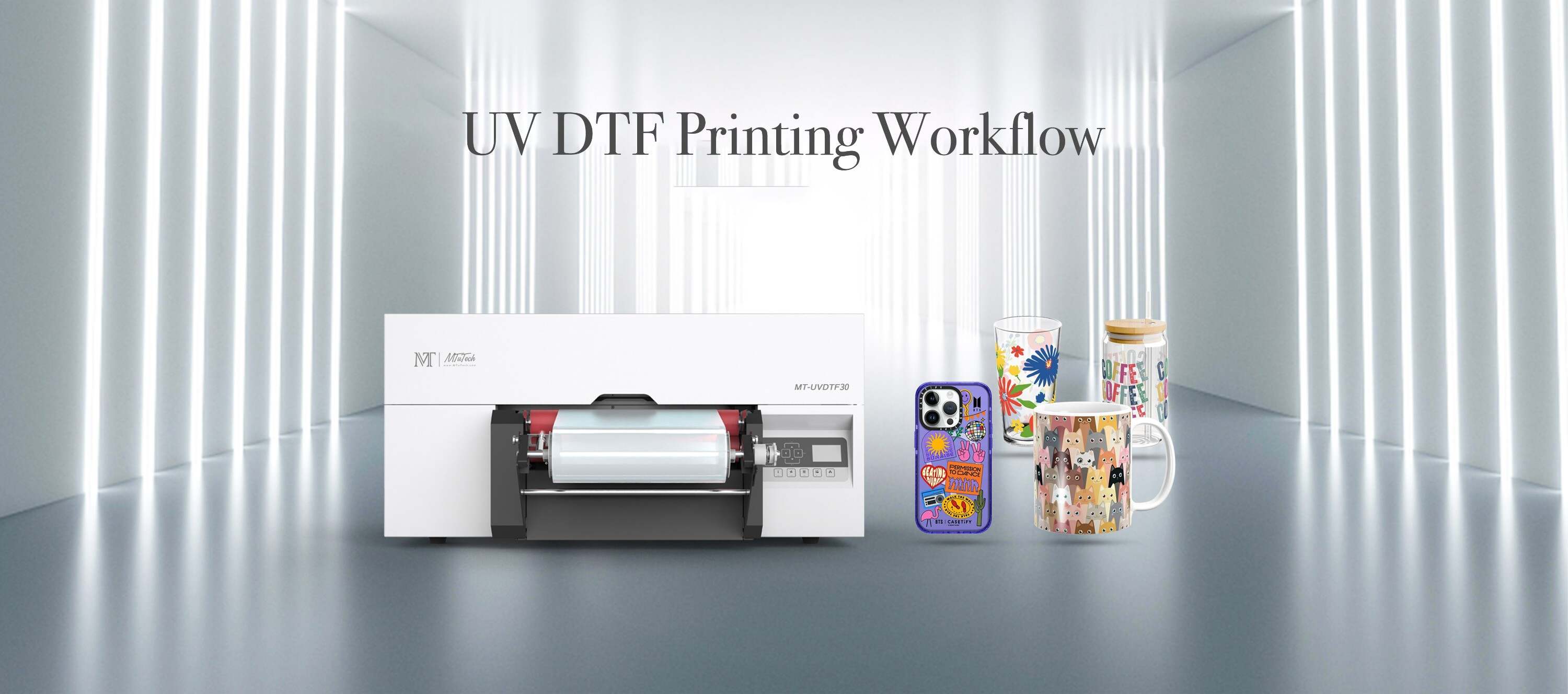Introduction
In today's fast-paced printing landscape, versatility and efficiency are paramount. Mini UV DTF (Direct-to-Film) printers have emerged as a game-changing solution for businesses looking to expand their printing capabilities. Compact yet powerful, these printers offer creative professionals and small businesses an opportunity to produce high-quality prints on various materials. In this blog post, we will explore the technology behind mini UV DTF printers, their benefits, features, and applications in the printing industry.
Understanding UV DTF Printing Technology
What is DTF Printing?
Direct-to-Film (DTF) printing is a technique that allows for vibrant designs to be printed directly onto a specialized transfer film. The printed film can then be heat-transferred onto various substrates, including textiles, ceramics, and even plastic. This method has gained popularity due to its ability to produce intricate designs with high color fidelity.
What Makes it UV?
UV printing refers to using ultraviolet (UV) light to cure or dry the ink as it is printed. The combination of DTF and UV technology enhances the printing process by ensuring faster drying times and a more durable finish, making prints resistant to wear and tear.
Benefits of Mini UV DTF Printers
Mini UV DTF printers are designed to cater to diverse needs, providing several key advantages:
Compact Size: Small footprint makes them suitable for limited workspaces.
Versatility: Can print on a wide array of materials including textiles, wood, metal, and glass.
Ease of Use: Generally user-friendly, allowing quick setup and operation.
Cost-Effective: Affordable initial investment with low running costs.
High-Quality Prints: Produces vivid colors and intricate details with excellent color consistency.
Features of Mini UV DTF Printers
When selecting a mini UV DTF printer, consider the following features that enhance performance:
Print Resolution: Look for printers with high DPI (dots per inch) capabilities to ensure superior image quality.
Print Speed: Evaluate the printer's output speed, especially if you plan to handle high-volume jobs.
Ink Compatibility: Ensure the printer supports quality UV inks for lasting results.
User-Friendly Software: Integrated software simplifies design settings and adjustments for enhanced creativity.
Durable Build: A robust construction guarantees the longevity of the printer.
Connectivity Options: Look for USB and Wi-Fi capabilities for convenient connections.
Applications of Mini UV DTF Printers
Mini UV DTF printers are incredibly versatile and find applications across various industries:
Custom Apparel: Perfect for printing designs on t-shirts, hoodies, and other clothing items.
Promotional Products: Ideal for creating promotional items like mugs, phone cases, and keychains.
Signage: Useful for producing signs, banners, and displays that require colorful graphics.
Personalized Gifts: Great for customizing gift items for special occasions.
Home Decor: Excellent for printing designs on home accessories like cushions and wall art.
How to Choose the Right Mini UV DTF Printer
Choosing the right mini UV DTF printer can be a daunting task. Here are some tips to help you make an informed decision:
Evaluate Your Needs: Determine the type of products you wish to print and choose a printer that matches those requirements.
Research Brands: Different brands offer varying levels of reliability and support. Look for established brands with positive reviews.
Test Printing: If possible, request a demo or examine test prints to gauge print quality.
Consider Support and Warranty: A solid warranty and customer support can greatly enhance your purchasing experience.
Maintenance Tips for Mini UV DTF Printers
Proper maintenance ensures the longevity and efficiency of your mini UV DTF printer. Here are some maintenance tips:
Regular Cleaning: Clean the print heads and maintenance areas frequently to avoid clogs.
Use Quality Inks: Use only recommended inks for optimal performance and to avoid printer damage.
Check Software Updates: Keep your printer's software updated to benefit from new features and enhancements.
Monitor Ink Levels: Regularly check ink levels and replace cartridges before running out.
Conclusion
Mini UV DTF printers are revolutionizing the way businesses approach printing, offering flexibility, quality, and ease of use. Their ability to print on various materials opens up countless creative avenues for entrepreneurs and artists alike. Whether you're looking to expand your printing capabilities or venture into a new business, investing in a mini UV DTF printer can be a smart move. With the right research and understanding of your needs, you can find the perfect printer to suit your requirements. If you’re interested in exploring high-quality options, explore our high-quality UV-DTF printers here.
FAQ
What is the difference between DTF and traditional printing methods?
DTF printing uses a specialized transfer film to apply vibrant images onto various materials, while traditional methods like screen printing often rely on stencils and layers of ink. DTF provides more versatility and allows for more intricate designs with less setup time.
Can I use mini UV DTF printers for both light and dark materials?
Yes, mini UV DTF printers are designed to print effectively on both light and dark materials, providing a wide range of applications. The UV ink provides excellent opacity, making it suitable for various substrates.
Are mini UV DTF printers eco-friendly?
Many modern mini UV DTF printers utilize eco-friendly inks and materials, reducing their environmental impact. It is essential to check the manufacturer’s specifications regarding eco-friendliness.
How much maintenance do mini UV DTF printers require?
Maintenance requirements can vary based on usage. Generally, regular cleaning, monitoring ink levels, and performing software updates are necessary to keep the printer functioning optimally.
What are the typical costs associated with owning a mini UV DTF printer?
The costs include the initial purchase price, ink cartridges, transfer films, and routine maintenance supplies. While the initial investment may be minimal, ongoing costs should also be factored into your budget.

